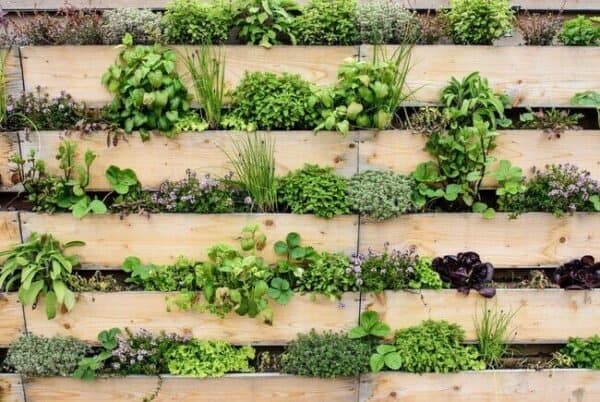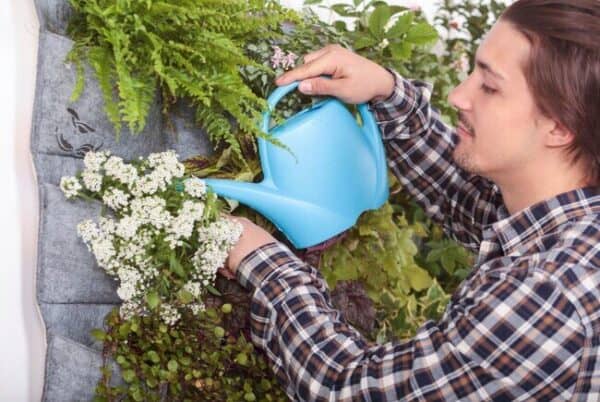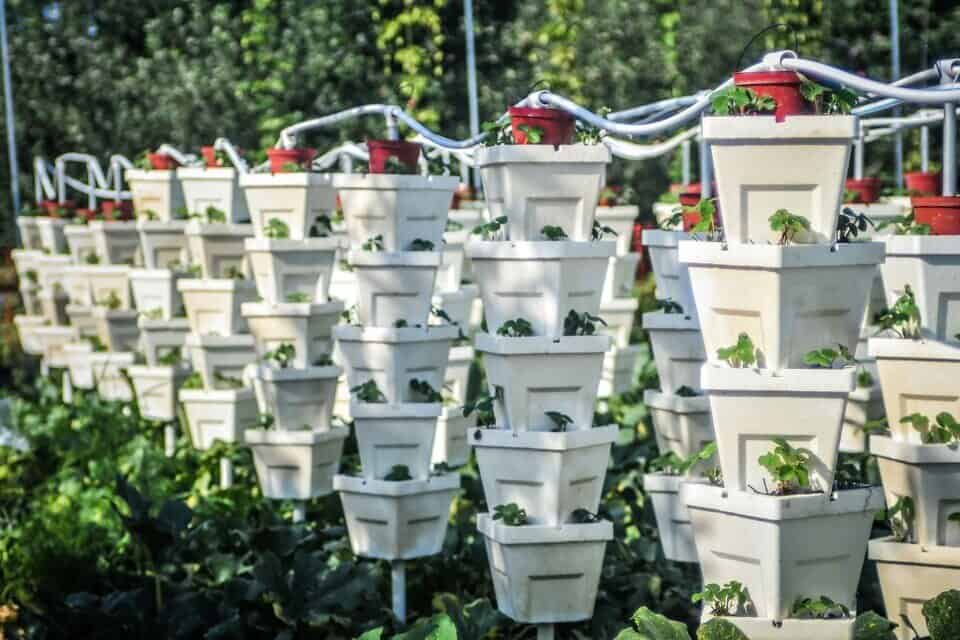Discover the world of vertical gardening, a game-changing approach that allows you to grow a lush, thriving garden even in the smallest of spaces. Learn how to harness this innovative method to transform your urban oasis and cultivate a diverse range of plants, all while maximizing space.
Vertical gardening is a space-saving technique for growing plants on vertical surfaces in urban settings. It offers versatility, aesthetics, and environmental benefits. Ideal for limited spaces, this method enables cultivation of various plants while conserving water and improving air quality.
Dive deeper into the captivating realm of vertical gardening and uncover the secrets to making the most of limited urban spaces. As you explore this innovative technique, you’ll be amazed at the variety of plants you can grow and the stunning displays you can create.
Don’t miss out on the opportunity to master space-saving strategies, sustainable practices, and creative solutions that will elevate your gardening skills to new heights. So, why wait? Continue reading and embark on a journey to transform your small space into a flourishing garden sanctuary.
What Is Vertical Gardening?
The Rise of Vertical Gardening in Urban Spaces
Vertical gardening has become increasingly popular as an innovative solution for growing plants on vertical surfaces in urban areas where space is limited. It offers a practical way to create a beautiful and functional garden in small spaces like balconies, patios, rooftops, and even indoors.
Aesthetic Appeal and Versatility
Transform bland walls or fences into lush, vibrant gardens with vertical gardening. This versatile technique can be adapted for various settings and plant types, including vegetables, herbs, flowers, and succulents, depending on your preferences and space constraints.
Benefits of Vertical Gardening
Vertical gardening offers numerous advantages, such as water conservation, reduced pest and disease risks, and improved air quality. It also promotes sustainable gardening practices and helps reduce your carbon footprint, making it an environmentally friendly choice.
Creating Your Green Oasis
With proper planning and maintenance, vertical gardening can be an enjoyable and rewarding experience that allows you to cultivate your green oasis. It’s an ideal solution for those with limited space who still wish to enjoy the perks of gardening.
Expanding Your Plant Options
Vertical gardening enables you to grow more plants in a smaller area and cultivate plants that may not typically thrive in your climate or soil by creating a more suitable microclimate. Whether you’re a seasoned gardener or a beginner, vertical gardening offers a unique, space-saving approach to bring nature into your home.
Choosing the Right Trellises and Vertical Supports
When it comes to vertical gardening, choosing the right trellises and supports is crucial. Not only do they provide the necessary structure for your plants to grow, but they can also add visual interest to your garden. Here are some factors to consider when selecting the right trellises and vertical supports:

- Plant Type: Different plants require different types of support. For example, vining plants like tomatoes and cucumbers need sturdy trellises or cages to climb, while lighter plants like peas and beans can be supported by simple netting or string.
- Size: Consider the mature size of your plants when selecting trellises and supports. Make sure they are tall and wide enough to accommodate your plants when they reach full size.
- Material: Trellises and supports come in a variety of materials, including wood, metal, and plastic. Consider the durability, aesthetic appeal, and maintenance requirements of each material before making your selection.
- Location: The location of your vertical garden will also play a role in your trellis selection. If your garden is in a windy area, you’ll need a sturdy trellis that can withstand strong gusts. If your garden is in a shaded area, you’ll need a trellis that can support plants that require less sunlight.
By considering these factors when selecting your trellises and vertical supports, you’ll be able to create a beautiful and functional vertical garden that will thrive for years to come.
A great starter vertical garden can start with this appeasing stacking planters. They are really great for herbs for healthy eating and cooking. Check out the 5 Tier Stackable planter on Amazon here
Top Plants for a Successful Vertical Garden
When it comes to choosing plants for your vertical garden, there are a few things to keep in mind. You want plants that are compact, lightweight, and have shallow root systems. Here are some of the top plants to consider:
- Herbs: Basil, parsley, thyme, and cilantro are all great choices for a vertical garden. They are compact, easy to care for, and can be harvested frequently for use in your cooking.
- Succulents: Succulents are perfect for a vertical garden because they require very little water and are low maintenance. Some popular succulents include jade, aloe vera, and hens and chicks.
- Lettuce: Lettuce is a great choice for a vertical garden because it is lightweight and has a shallow root system. You can harvest the leaves as they grow, which means you’ll always have fresh lettuce on hand.
- Strawberries: Strawberries are a popular choice for vertical gardens because they are compact and produce fruit throughout the growing season. Look for varieties that are specifically bred for container gardening.
- Tomatoes: While tomatoes can be a bit trickier to grow in a vertical garden, they are definitely worth the effort. Look for compact varieties that are bred for container gardening, such as cherry tomatoes or patio tomatoes.
Remember, when choosing plants for your vertical garden, it’s important to consider the amount of sunlight and water they will need. Be sure to do your research and choose plants that are well-suited for your particular growing conditions.
Vertical Gardening Techniques for Limited Spaces
If you have limited space, vertical gardening can be a great solution to grow your own plants. Here are a few techniques to help you get started:
- Wall-mounted planters: These are perfect for small spaces and can be easily mounted on walls. You can use them to grow herbs, flowers, or even small vegetables.
- Hanging baskets: Hanging baskets can be used to grow trailing plants such as strawberries, tomatoes, and cucumbers. They are also great for growing flowers.
- Trellises: Trellises are perfect for growing climbing plants such as beans, peas, and cucumbers. They can be easily attached to walls or fences.
- Stacked planters: Stacked planters are perfect for growing a variety of plants in a small space. You can stack them on top of each other and create a vertical garden.
When choosing plants for your vertical garden, make sure you choose plants that are suitable for the amount of sunlight and space you have available. You can also mix and match plants to create a beautiful and functional garden.
Vertical gardening can be a fun and rewarding way to grow your own plants, even if you have limited space. With the right techniques and plants, you can create a beautiful and productive garden that will provide you with fresh produce and beautiful flowers.
Maintenance and Care: Tips for a Flourishing Vertical Garden
Vertical gardening is a great way to maximize your gardening space and add some greenery to your home. However, like any other garden, it requires maintenance and care to ensure that your plants thrive. Here are some tips for maintaining your vertical garden:
- Watering: Make sure to water your plants regularly, especially during hot and dry weather. Use a watering can or a hose with a gentle spray attachment to avoid damaging the plants or the structure of the garden.
- Fertilizing: Use a balanced fertilizer to provide your plants with the necessary nutrients. Follow the instructions on the package and avoid over-fertilizing, as it can damage the plants.
- Pest Control: Check your plants regularly for signs of pests, such as aphids or spider mites. Use an organic pesticide or insecticidal soap to control the infestation.
- Pruning: Trim your plants regularly to promote healthy growth and prevent overcrowding. Remove any dead or yellow leaves and cut back any stems that are blocking sunlight or air circulation.
- Seasonal Care: Adjust your care routine based on the season. During the winter, you may need to move your plants indoors or cover them with a protective cloth. In the summer, you may need to water them more frequently.
By following these tips, you can ensure that your vertical garden remains healthy and beautiful all year round.
The Impact of Vertical Gardening on Weed Control
Vertical gardening is an innovative way to grow plants in a limited space. It has many benefits, including better use of space, increased yields, and improved aesthetics. Another significant advantage of vertical gardening is that it can help control weeds.
When you grow plants vertically, you can control the environment in which they grow. This means that you can create a weed-free environment by using the right soil, mulch, and other materials. By doing so, you can reduce the need for weeding, which can save you time and effort.

Vertical gardening also makes it easier to identify and remove weeds. When plants are grown vertically, they are more accessible, which means that you can easily spot any weeds that may be growing among them. This can help you remove the weeds before they have a chance to spread and take over your garden.
Another way that vertical gardening can help control weeds is by reducing soil compaction. When plants are grown in traditional gardens, the soil can become compacted, which can create an environment that is conducive to weed growth. However, when plants are grown vertically, the soil is less likely to become compacted, which can help reduce weed growth.
In addition, vertical gardening can help reduce the need for herbicides. Herbicides can be harmful to the environment and can have negative effects on human health. By reducing the need for herbicides, vertical gardening can help protect the environment and promote healthier living.
Conclusion
Vertical gardening has many benefits, including improved weed control. By growing plants vertically, you can create a weed-free environment, make it easier to identify and remove weeds, reduce soil compaction, and reduce the need for herbicides. If you want to enjoy these benefits, consider starting a vertical garden today.


